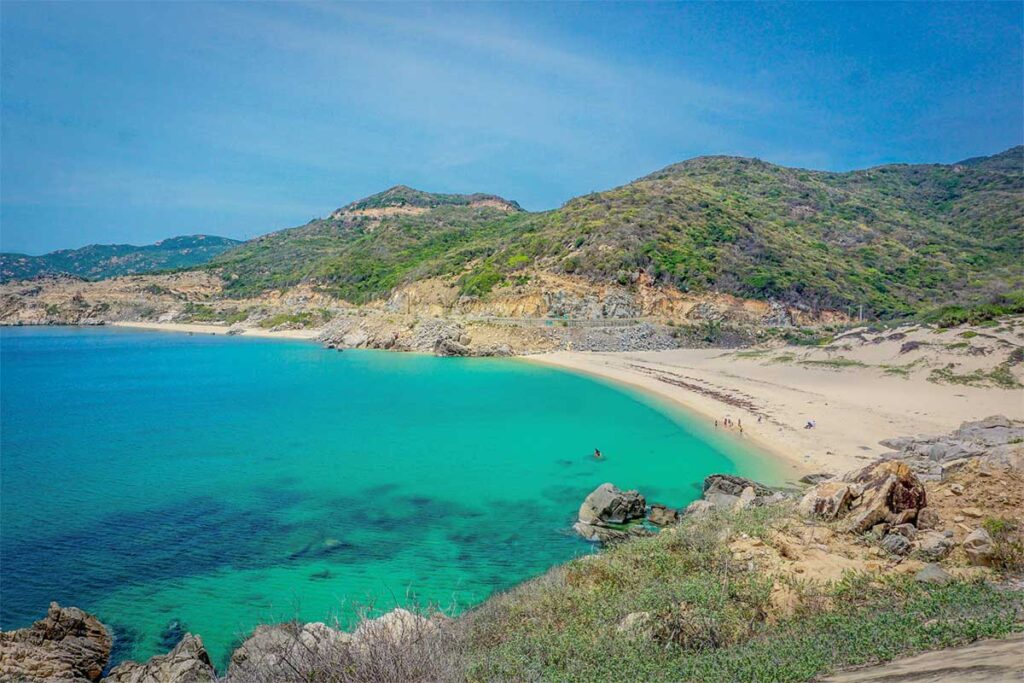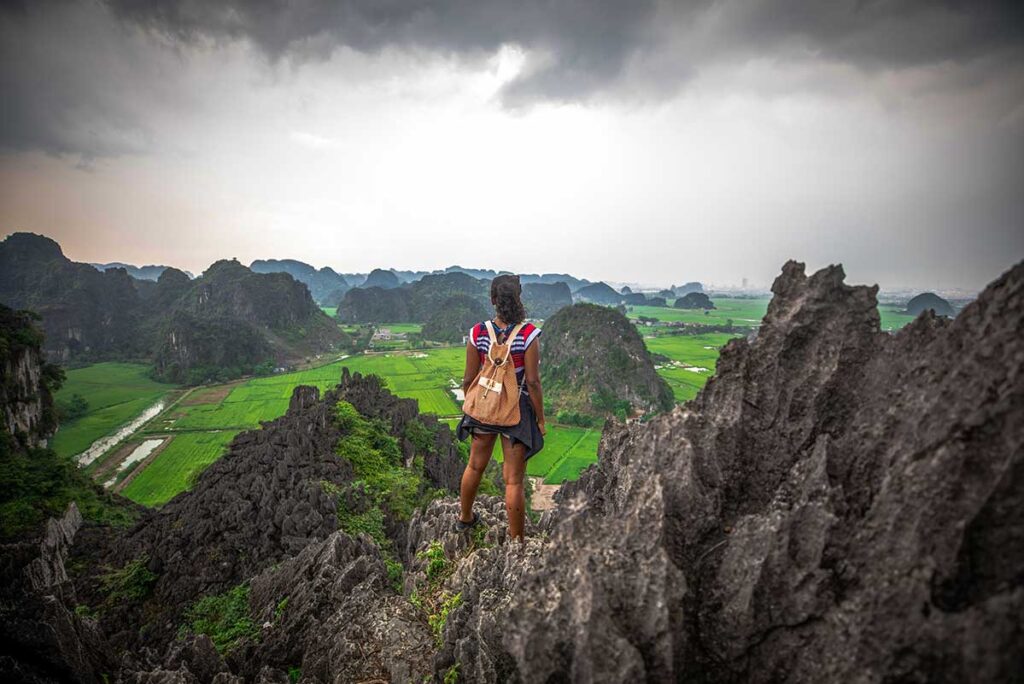What is Bai Mon Beach like?
Bai Mon Beach is a small bay in Phu Yen, tucked at the foot of Mui Dien (also called Dai Lanh) Lighthouse. The beach itself is only about 400 meters long, with soft golden sand and clear water framed by two rocky headlands. A small freshwater stream runs across the sand into the sea, and the cliffs above give it a dramatic setting with the lighthouse perched on top.
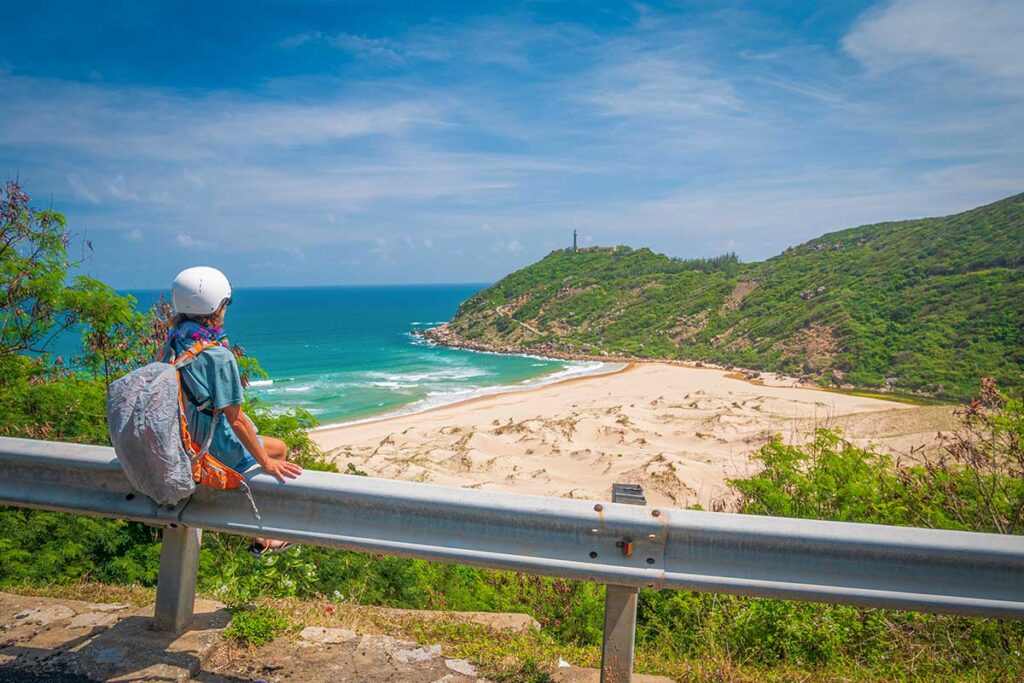
From the coastal road or viewpoints nearby, Bai Mon looks incredible – a perfect V-shaped inlet that feels wild and untouched. Up close, however, the experience can be mixed. You need to pay an entrance fee to access the beach, swimming is often restricted because of strong currents, and the sand is not always clean. It is still a striking and photogenic spot, but better appreciated as part of a coastal trip than as a standalone beach day.
What to See & Do at Bai Mon Beach
1. Relaxing on the beach
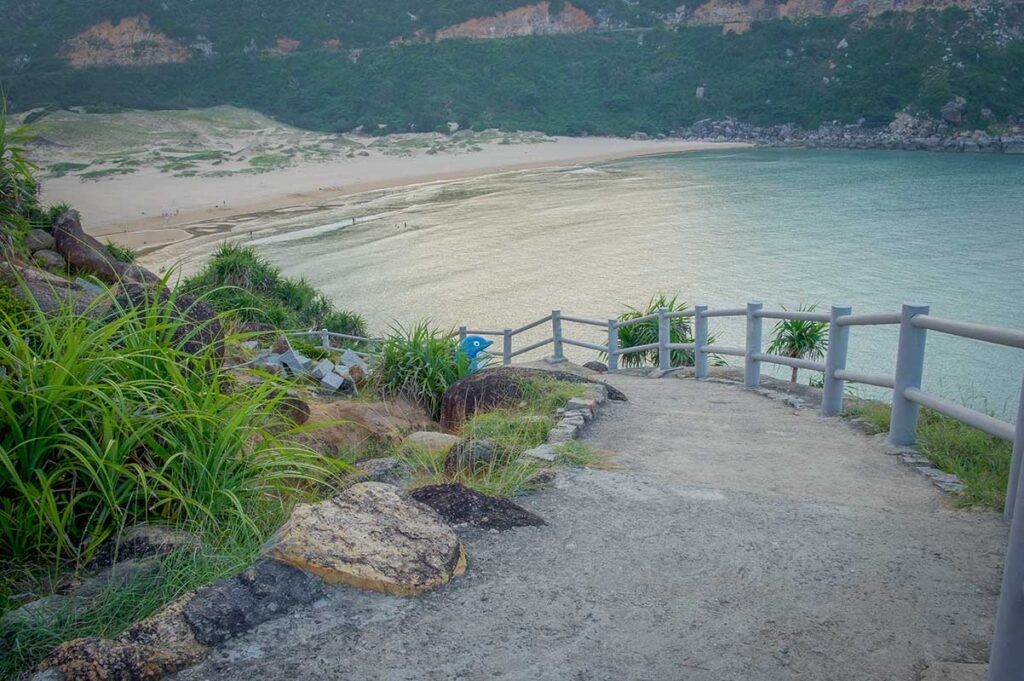
The sandy cove is beautiful to look at, with golden sand and turquoise water framed by hills on both sides. That said, it’s not the kind of beach where you can easily spend a whole day.
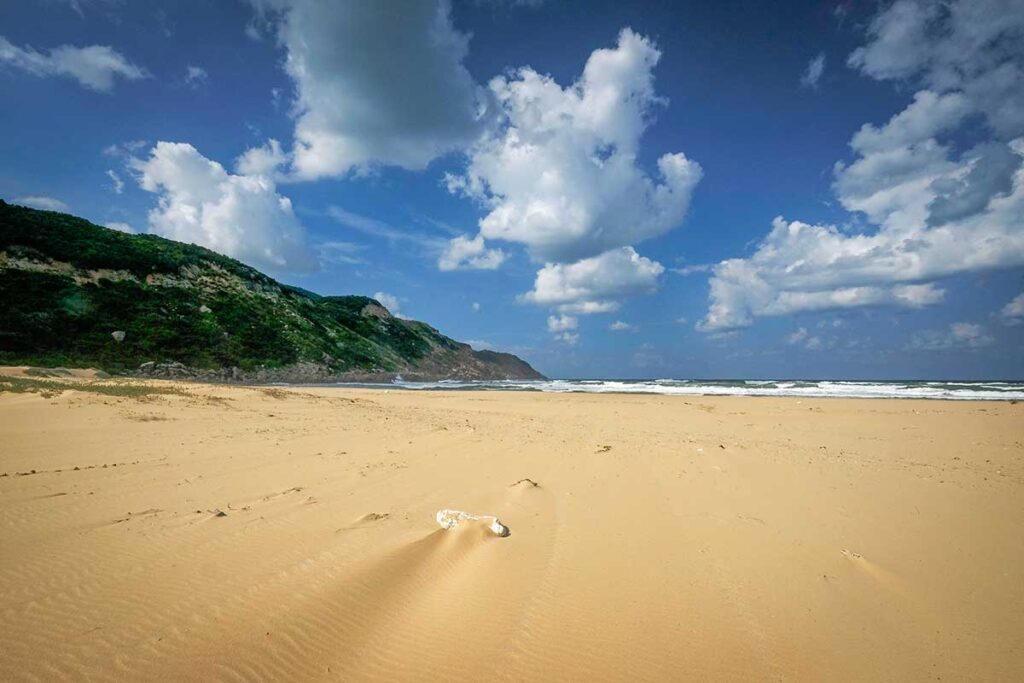
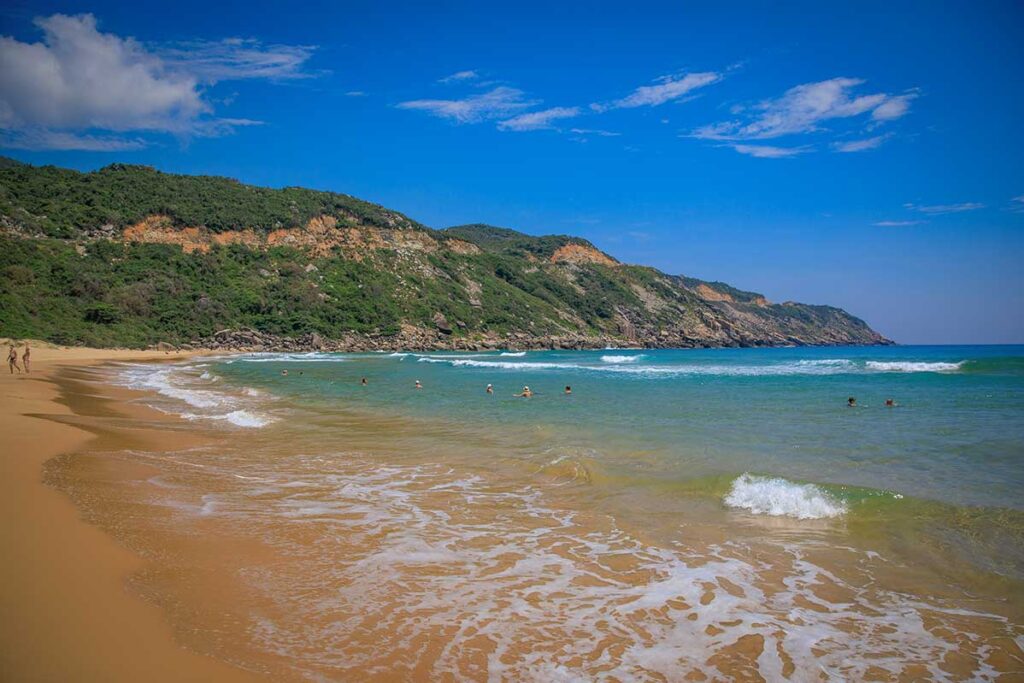
There are no trees or natural shade, and by late morning the heat can be overwhelming. Swimming is often restricted due to strong currents, so it’s more of a place to stroll, take photos, and enjoy the scenery than to dive in for a swim.
2. Sunrise & sunset views
Bai Mon is famous for being one of the first spots in Vietnam to see the sunrise. Watching the first light over the sea is the highlight here, and the setting makes it special. Some visitors choose to camp overnight to catch the sunrise, but there are no real facilities, so you need to bring your own gear and ask permission from the site’s management. Sunset views are also striking from the cliffs, though less unique.
3. Mui Dien (Dai Lanh) Lighthouse
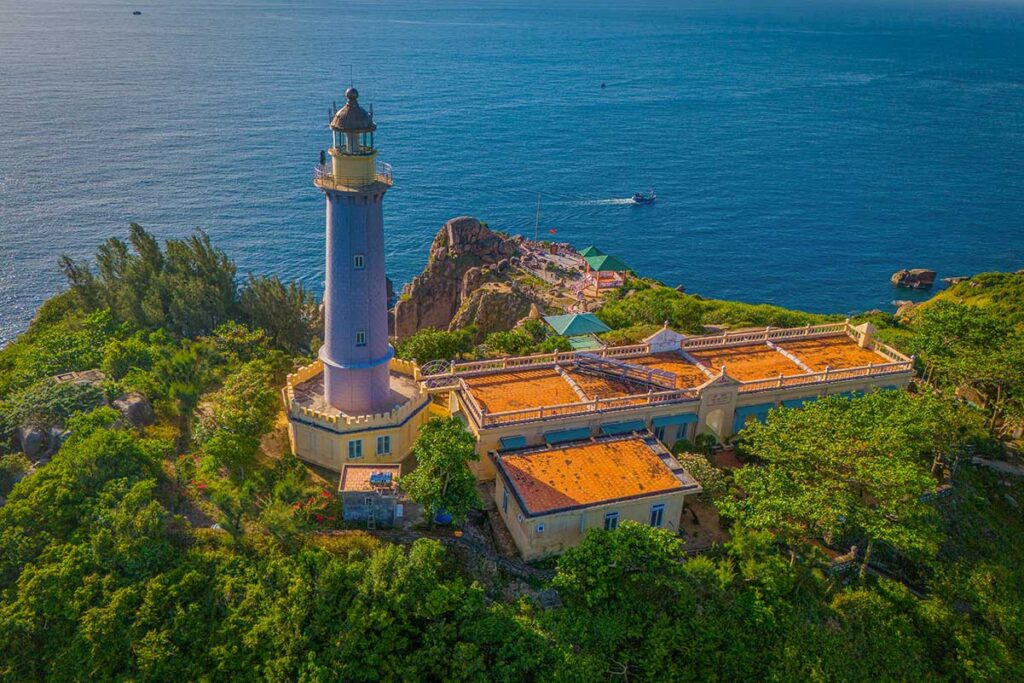

Perched above the beach, Mui Dien Lighthouse is a 26-meter colonial-era structure rebuilt in the 1990s. You can reach it by climbing about 400 steps from the entrance area.
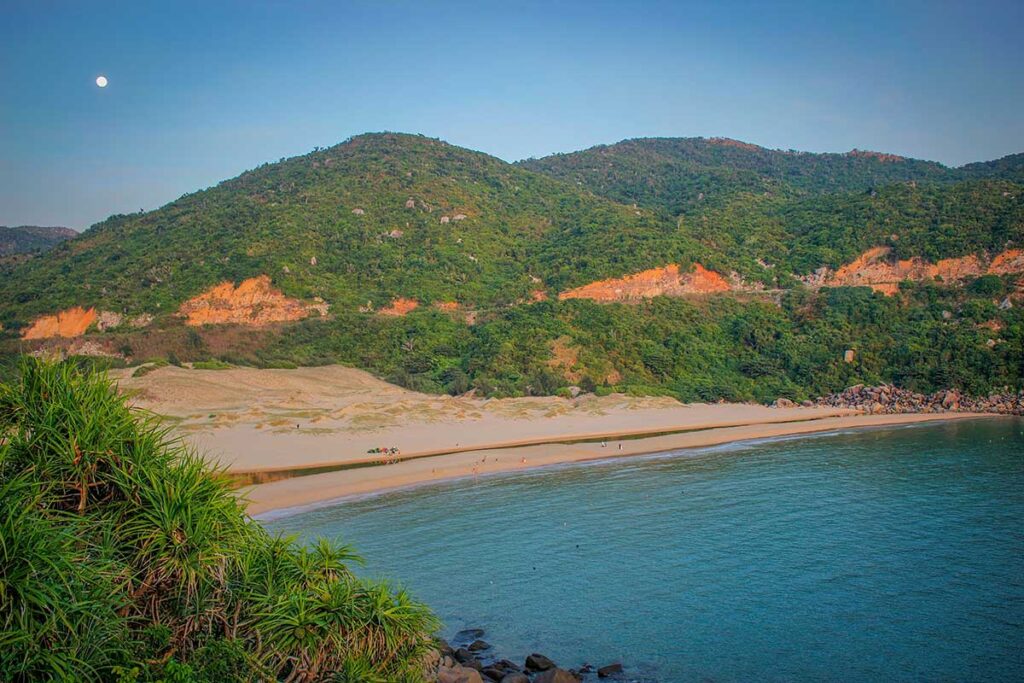
Visitors are allowed to go inside and climb the spiral stairs for panoramic views over the coast. The views are impressive, though the climb is hot and tiring, and some find the lighthouse itself less striking up close than it appears from a distance. An additional ticket is required to enter.
4. Hiking to Mui Dien Cape
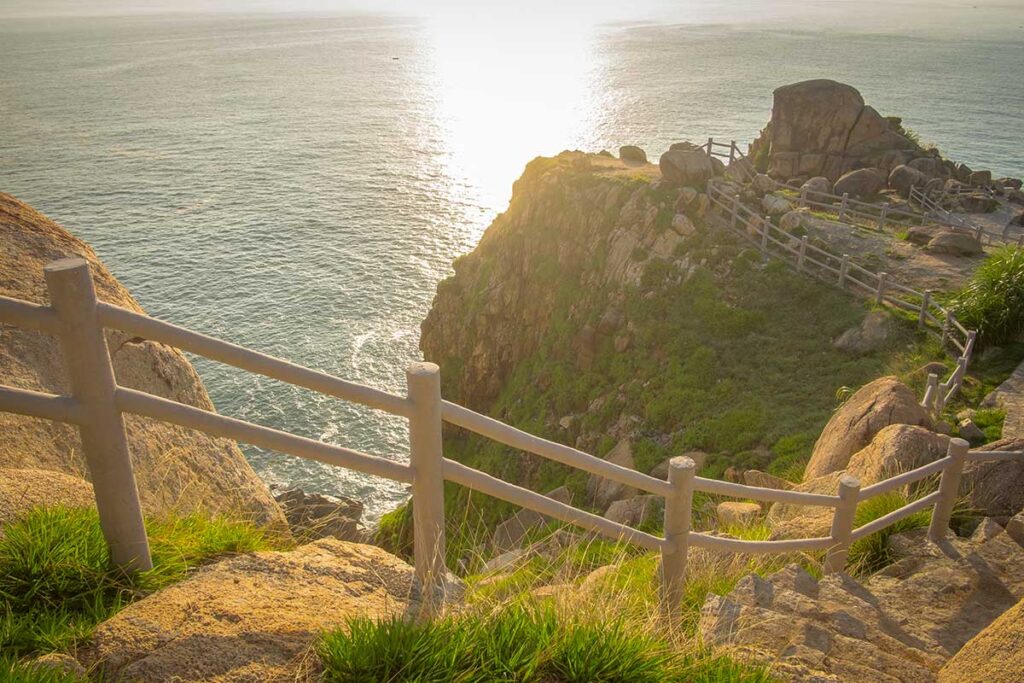
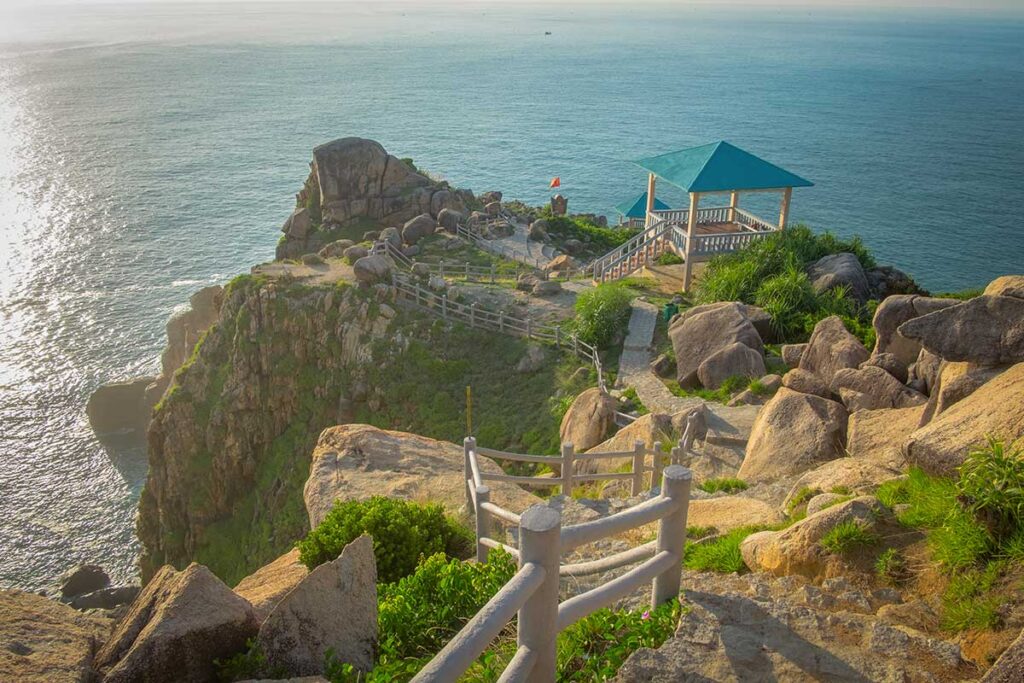
From the lighthouse, a short trail continues to Mui Dien Cape, the windswept eastern tip of the peninsula. The hike is relatively easy but exposed to the sun and wind, so it’s best attempted in the early morning. The reward is dramatic coastline views and a sense of being on the edge of Vietnam, though it can feel harsh in the midday heat.
5. Freshwater stream
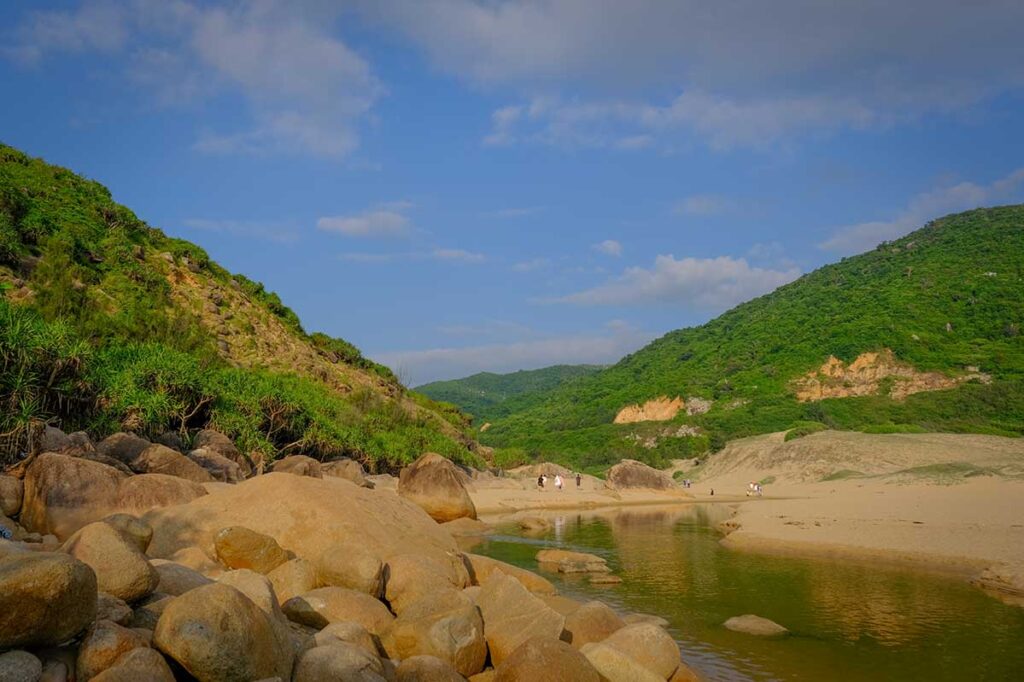
A small stream runs across the sand before reaching the sea. It’s nothing major but adds a photogenic element and can be refreshing to dip your feet in. The stream also makes the beach landscape feel more natural and unique compared to other small bays in the region.
6. Dining nearby
There are no restaurants directly on Bai Mon Beach, just a few vendors selling drinks and snacks. For a proper meal, it’s best to combine your visit with nearby Vung Ro Bay, where floating seafood restaurants serve fresh dishes like lobster and shrimp. This makes for a great add-on after exploring the beach and lighthouse.
7. Combine with Vung Ro Bay & Deo Ca Pass

Bai Mon is best enjoyed as part of a wider coastal trip. The scenic road passes through Deo Ca Pass with its mountain views, continues past Vung Ro Bay with its floating villages, and links to other smaller beaches. Rather than planning a full day just for Bai Mon, it makes more sense to stop here for an hour or two on a coastal route.
Best time to visit
The dry season from January to August is the best time to visit Bai Mon Beach. During these months the weather is generally sunny with calmer seas, making the scenery especially beautiful. Keep in mind, though, that there is no shade on the beach, so the heat can be intense by midday.

The rainy season runs from September to December, when the sea often turns rough with heavy waves. This makes swimming unsafe and limits the appeal of spending much time on the sand.
Each season offers a different experience: in summer you get clear skies and the chance to see stunning sunrises, but also strong sun and high temperatures. In winter, the waves crashing against the cliffs create a dramatic scene, though it’s more for photography and sightseeing than for relaxing on the beach.
Location & Getting there
Where is Bai Mon Beach?
Bai Mon Beach lies about 30 km southeast of Tuy Hoa, the main city in Phu Yen Province. It sits right below Mui Dien Lighthouse, at the edge of a dramatic coastal headland. The beach can also be reached from Nha Trang, which is further away but connected by the scenic Deo Ca Pass – a winding coastal road with great views.
Taxi or ride-hailing
A taxi or Grab car from Tuy Hoa is a straightforward way to get there. The problem is that services are limited around the beach, so you may struggle to find a ride back. The best approach is to agree on a round trip and ask the driver to wait while you explore, even if it means paying a little extra.
Car with driver
Hiring a private car with driver is a more reliable option, especially if you want to combine Bai Mon with other nearby stops like Mui Dien, Vung Ro Bay, and Deo Ca Pass. With this option, you set the itinerary in advance, have a fixed price for the day, and don’t need to worry about transport once you’re at the beach.
Renting a motorbike
For independent travelers, renting a motorbike is the cheapest and most flexible way to reach Bai Mon. The ride itself is part of the appeal – the roads are scenic, hugging the coastline, and generally not too chaotic compared to big cities. That said, you do need a valid motorbike license and an International Driving Permit to be fully legal in Vietnam, even though many rental shops don’t check.
Practical tips for visiting
- Entrance fees: Expect to pay 20,000–30,000 VND per person, plus a small extra fee for parking motorbikes or cars.
- No shade: There are no trees or umbrellas on the beach, so bring a hat, sunscreen, and plenty of water if you plan to stay for more than a quick visit.
- Swimming restrictions: Swimming is often not allowed due to strong currents. Even when permitted, conditions can change quickly, so stay cautious.
- Trash issue: The beach is not always well maintained and you may see plastic waste along the tide line, especially after storms.
- Footwear: Wear comfortable shoes if you plan to climb to Mui Dien Lighthouse or continue on the cape trail. The steps can be hot and steep.
- Camping: Overnight camping is possible but basic. You’ll need to bring your own tent and supplies, and it’s important to ask permission from the site’s management first.
- Combine stops: Bai Mon is best included in a broader coastal day trip with Mui Dien Lighthouse, Vung Ro Bay, and the Deo Ca Pass rather than treated as a standalone destination.
Is Bai Mon Beach worth visiting?
Bai Mon Beach is worth visiting if you enjoy dramatic coastal scenery, winding road trips, and photography at sunrise or sunset. Combined with Mui Dien Lighthouse and Vung Ro Bay, it makes for a rewarding stop on a coastal itinerary. The views from the road and cliffs are especially memorable.
On the other hand, it may disappoint if you expect a clean, swimmable beach with good facilities. Entrance fees, occasional trash, and frequent swimming bans frustrate some visitors. There is little shade or comfort for spending a full day here.
Overall, Bai Mon is best appreciated from viewpoints and as one stop on a bigger trip rather than as a standalone beach destination.
